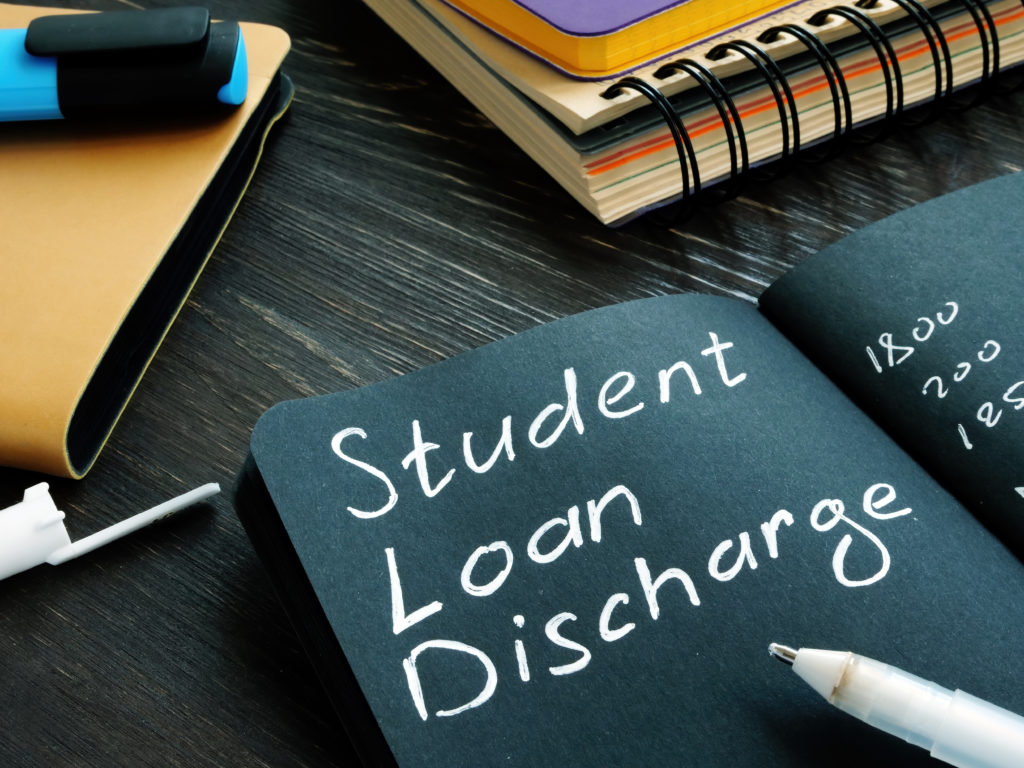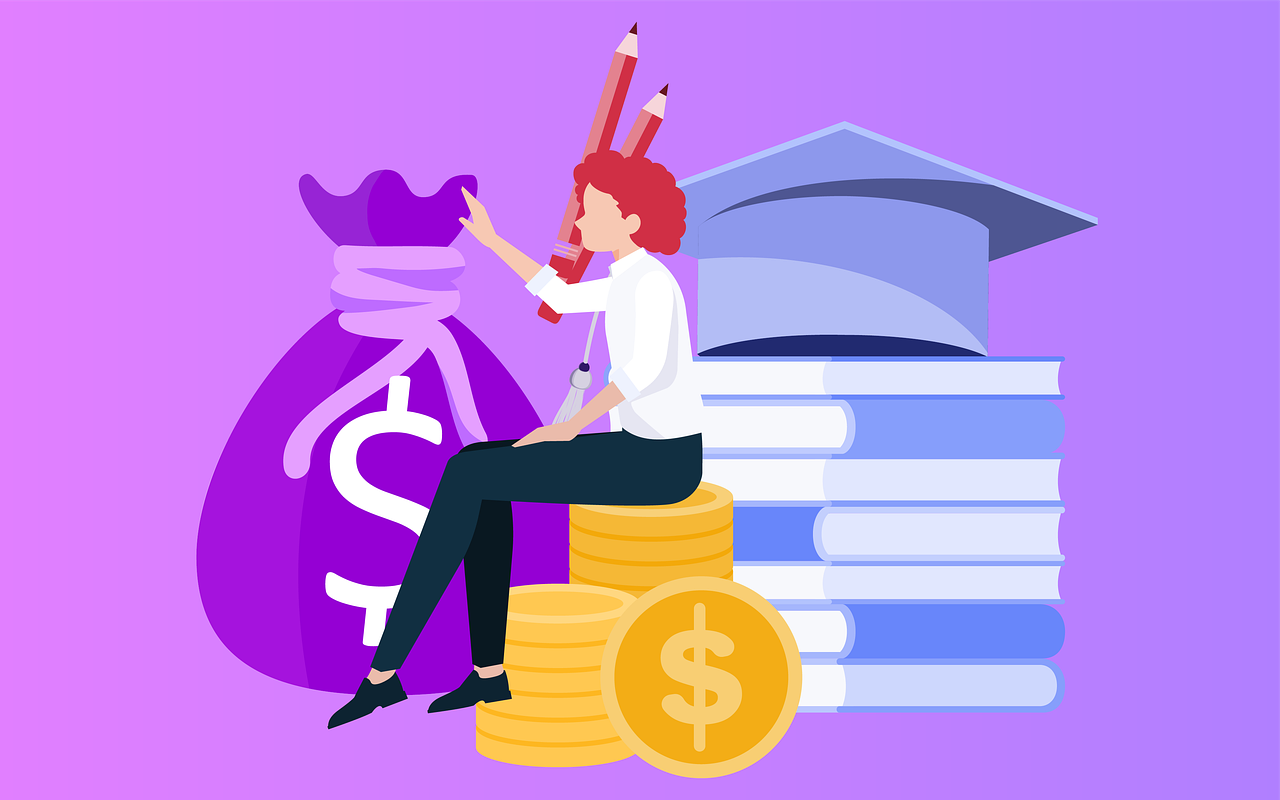Student loan forgiveness programs are available to borrowers who have loans with the federal government. These programs offer relief for those struggling to make payments or who may not pay their student loans in full. The three main types of forgiveness are public service, teacher, and income-driven repayment plans. We will talk about each one in turn and other options that might exist depending on your situation.
The Student Loan Forgiveness Program.
A student loan forgiveness program is a federal government program that allows borrowers to have their federal student loans forgiven after they complete a specific number of qualifying payments. There are several different forgiveness programs available, including the Public Service Loan Forgiveness Program (PSLFP) and the Teacher Loan Forgiveness Program (TLFP).
The Student Loan Repayment Program.
A student loan repayment program is a plan that allows borrowers to make smaller monthly payments over a more extended period. This can be helpful for borrowers who are struggling to keep up with their current monthly expenses.
Several different repayment programs are available, including the Income-Based Repayment Plan (IBR) and the Pay As You Earn Repayment Plan (PAYE).
What is the difference between a student loan forgiveness program and a student loan repayment program?
The main difference between a student loan forgiveness program and a student loan repayment program is that it allows borrowers to have their loans forgiven after completing a specific number of qualifying payments.
In contrast, a repayment program allows borrowers to make smaller monthly payments over a more extended period.
Public Service Loan Forgiveness Program
The PSLFP was created in 2007 and became available to borrowers in October 2017. The program allows borrowers working full-time for a qualified public service organization to have their Direct Loans forgiven after making 120 qualifying monthly payments. To be eligible for PSLFP, you must:
- Be employed full-time by a public service organization
- Have Direct Loans (both subsidized and unsubsidized) to qualify for PSLFP under a qualifying repayment plan while working full-time for a qualifying employer. If you have only Federal Family Education Loan Program loans, you are not eligible for this program.
- Be making monthly payments on your student loan(s). Payments made through an income-driven repayment plan or a graduated repayment plan do not count towards the 120 qualifying monthly payments required to receive forgiveness under the Public Service Loan Forgiveness Program. Only standard payment plans can be used when measuring these 120 payments.
- Additionally, borrowers must work full time to accumulate enough of these qualified months toward the total necessary for forgiveness at the end of the term. This means that if they leave their job before completing five years of service, they may not be eligible to receive forgiveness.
- One exception does exist for those who leave the public service job before completing their five years: total and permanent disability (TPD). If borrowers become disabled before reaching the 120-payment threshold necessary for complete loan forgiveness under this program, they can apply to have their loans discharged.
The Teacher-Student Loan Forgiveness Program.
This program forgives up to $17,500 of your Federal Stafford Loans, Federal Perkins Loans, or direct loans if you teach full-time for five consecutive years in a low-income school.
You must be a highly qualified full-time elementary or secondary school teacher, instructor of underprivileged students, or educational service agency employee who provides services to underserved children and has Federal Stafford Loans or direct loans.
Teachers may also qualify if they have been employed as an education technician for at least one year with someone else’s Perkins Loan Program funds. The student loan forgiveness is paid by your employing organization rather than directly from the government. You can find more information here: Teacher Student Loan Forgiveness.
The Public Service Loan Forgiveness program (PSLF) forgives any remaining balance on Unsubsidized Direct Loans, Subsidized Federal Stafford Loans, and Direct PLUS Loans after 120 qualifying monthly payments (made under certain repayment plans while working full-time for a qualified public service organization).
To be eligible, you must first make sure that your employer qualifies as a public service organization. Your job must also meet specific requirements: it must be full-time, and you must work in an area
The Perkins Loan Cancellation and Discharge Programs
The Perkins Loan Cancellation and Discharge Programs are available to borrowers who have worked in specific public service jobs or the government. To qualify, you must have a federal Perkins loan. The program can cancel up to 100% of your loan balance after making 120 qualifying payments.
The Perkins Loan Cancellation and Discharge Programs are available to borrowers who have worked in specific public service jobs or the government. To qualify, you must have a federal Perkins loan. The program can cancel up to 100% of your loan balance after making 120 qualifying payments.
Income-Driven Repayment Plans
There are a few different income-driven repayment plans available to borrowers. For example, the Income-Based Repayment Plan (IBR) caps your monthly payment at 15 percent of your discretionary income.
The Pay As You Earn Repayment Plan (PAYE) caps your monthly payment at ten percent of your discretionary income. And the Revised Pay As You Earn Repayment Plan (REPAYE) caps your monthly amount at ten percent of your discretionary income but also includes any unpaid interest that has accrued on your loan since you began repaying it.
If you can’t afford to make even these reduced payments, there is still hope: each of these plans offers loan forgiveness after twenty or twenty-five years of qualifying expenses. Unfortunately, however, this is still a long time to wait.
Consolidating student loans to lower monthly payments.
Student loan consolidation is a process that allows borrowers to merge their multiple loans into one single loan. This can be helpful for those who are struggling to make their monthly payments on time because it lowers the monthly payment amount.
When you consolidate your student loans, you will be given a new interest rate and repayment term. It’s important to note that they will become private once reduced if you have federal loans. However, this doesn’t mean that you lose any of the benefits of federal loans.
There are two different types of consolidation: standard and graduated. With standard consolidation, your new interest rate will be based on the average of all of your previous rates. So, for example, if you had three loans before this with rates of six percent, seven percent, and eight percent, your new interest rate would be around five to six percent.
With graduated consolidation, you keep the same payment plan as your previous loan, but it will take longer to pay off the loan because the payments start low and increase every two years. This type of consolidation is beneficial for those who expect their income to increase over time, and they will be able to afford the increased payments.
How to apply for forgiveness programs
This varies depending on what type of forgiveness program the borrower qualifies for. There are various federal student loan repayment programs available that can help borrowers get out of debt faster or even be forgiven by having their loans discharged altogether.
The first option is income-driven payment plans, which vary based on household size and adjusted gross income (AGI). Minor monthly payments will be about $0 per month under these payment plans if a borrower has no earnings to qualify them for higher monthly payments necessary to meet this standard.
It may take longer than ten years to complete repayment with an extended repayment plan because there must still be at least one dollar remaining in the balance after 25 years from when the first payment was due. On average, borrowers with Direct Loans have a repayment term of about 12 years.
Borrowers should also explore public service loan forgiveness (PSLF) if they are employed by certain types of nonprofit or government organizations. Under this program, the remaining balance on the borrower’s federal student loans is forgiven after making 120 qualifying monthly payments while working for a qualified employer.
PSLF is the most generous student loan forgiveness program, but it has strict eligibility requirements that must be met to take advantage of this benefit.
In conclusion
Several student loan forgiveness programs discharge loans. It’s essential to research your options and choose the best program for you. If you have any questions, don’t hesitate to reach out to a qualified professional for help.
Several different student loan forgiveness programs discharge your loans. Be sure to do your research and pick the best one for you! Don’t hesitate to reach out for help if you have any questions.















